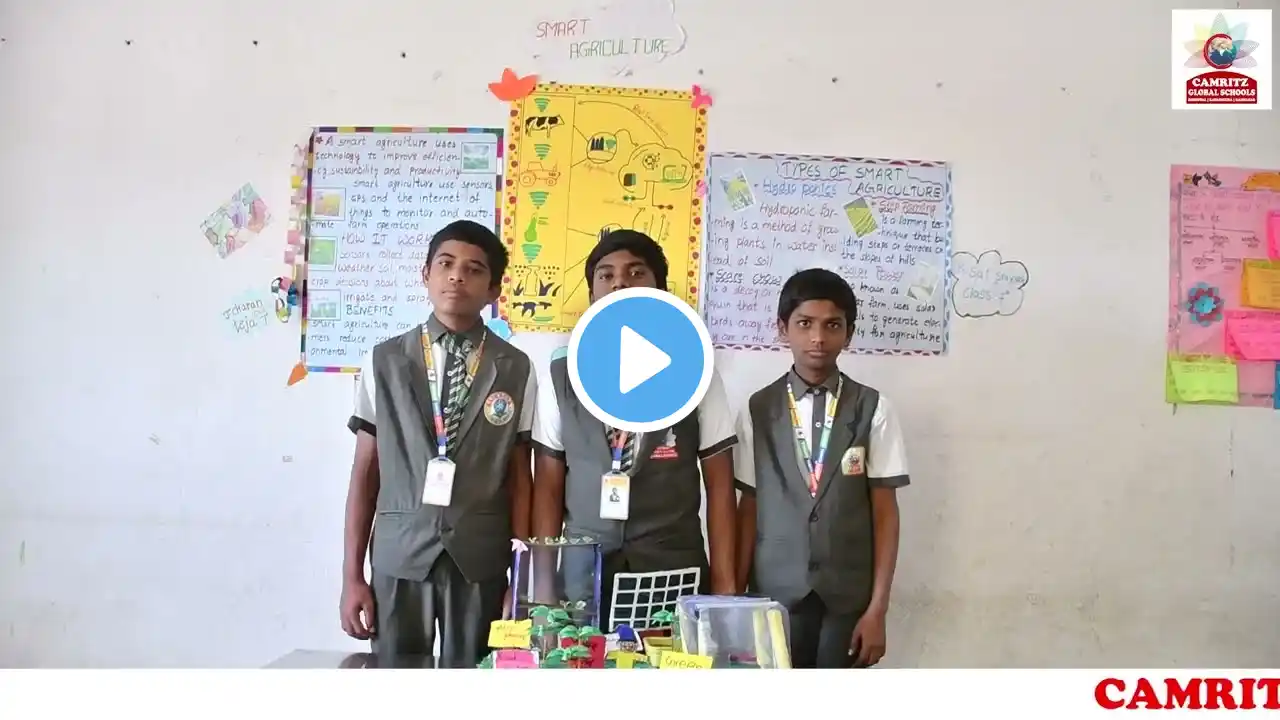
SOLAR SYSTEM SCIENCE FAIR PROJECT WORK | QUEENS GLOBAL SCHOOL #camritz | #goutham | #queens
Project Title: "Exploring the Solar System: Understanding Our Cosmic Neighborhood" Objective: The objective of this science fair project is to explore the solar system, focusing on the planets, moons, and other celestial bodies that make up our cosmic neighborhood. This project will allow you to understand the characteristics, motions, and relationships between these celestial objects. By creating models, conducting research, and explaining the workings of the solar system, the project will enhance your understanding of astronomy. Experiment Design: Step 1: Research the Solar System Gather detailed information about the solar system's structure, which includes: The Sun: The center of the solar system, a star that provides light and heat to the planets. Planets: The eight major planets (Mercury, Venus, Earth, Mars, Jupiter, Saturn, Uranus, and Neptune) and their unique characteristics (size, temperature, surface conditions, atmospheres). Moons: Many planets have moons. For example, Earth's moon, Jupiter’s moons like Europa, and Saturn’s moon Titan. Dwarf Planets: Objects like Pluto, Eris, and Ceres that orbit the Sun but are not classified as full-fledged planets. Asteroids and Comets: Small objects that also orbit the Sun. The Kuiper Belt and Oort Cloud: Regions that contain many icy bodies and dwarf planets. Step 2: Create a Model of the Solar System Planetary Model: Construct a model of the solar system to represent the Sun and its planets. The model can be as simple as using Styrofoam balls (or other materials) to represent each planet and the Sun. Paint them according to their real colors and size ratio. Size Proportions: The planets vary greatly in size. You can scale the sizes down but keep the relative size ratios. Orbital Distances: You can show the relative distances of planets from the Sun by scaling the distances down, although it may be difficult to keep true proportions for vast distances. Consider representing the solar system on a large board or floor space to give a sense of the scale. Planet Movement: If you want to go further, you can make the planets orbit around the Sun on wires or using a motor for rotation. Step 3: Investigate the Characteristics of Each Planet Research the distinctive features of each planet: Mercury: The closest planet to the Sun, known for its extreme temperature fluctuations and lack of atmosphere. Venus: A planet with a thick atmosphere that traps heat, creating a "runaway greenhouse effect." Earth: The only planet known to support life, with a breathable atmosphere and liquid water. Mars: Known as the "Red Planet," it has the largest volcano in the solar system (Olympus Mons) and signs of ancient water. Jupiter: The largest planet, a gas giant with the Great Red Spot (a massive storm) and many moons, including the largest moon, Ganymede. Saturn: Known for its stunning ring system, Saturn is a gas giant like Jupiter. Uranus: A gas giant that rotates on its side and has faint rings. Neptune: The furthest planet, known for its strong winds and its moon Triton, which has geysers of liquid nitrogen. Expected Results: Solar System Understanding: The results will include a better understanding of the solar system's layout, the relationships between the Sun and the planets, and the unique characteristics of each celestial body. Comparisons: You should observe the differences in atmospheres, temperatures, and physical features across the planets. For instance, Earth’s atmosphere supports life, while Venus has extreme heat due to its dense atmosphere. Model Accuracy: If you built a model, you’ll be able to show the relative sizes of the planets and their distances from the Sun, as well as how they orbit. Conclusion: Summarize Findings: Summarize the key features of each planet, moon, and other celestial bodies in the solar system. Discuss the importance of the Sun in maintaining the stability of the solar system and the roles of various celestial bodies in our cosmic neighborhood. Scientific Explanation: Explain why planets are classified as gas giants, ice giants, terrestrial planets, or dwarf planets based on their composition, size, and distance from the Sun. Real-World Application: Discuss the importance of understanding the solar system, including potential future exploration missions to planets like Mars, Jupiter's moons, and the search for extraterrestrial life. #SolarSystem #Astronomy #SpaceScience #Planets #STEMProject #PlanetaryScience #SolarSystemModel #NASA #ScienceFairProject #SpaceExploration #AstronomicalResearch #PlanetaryFormation #Exoplanets #SpaceDiscovery #Astrobiology #SpaceEducation #PlanetaryAtmosphere #StarSystem #SpaceTechnology #SolarSystemResearch



















